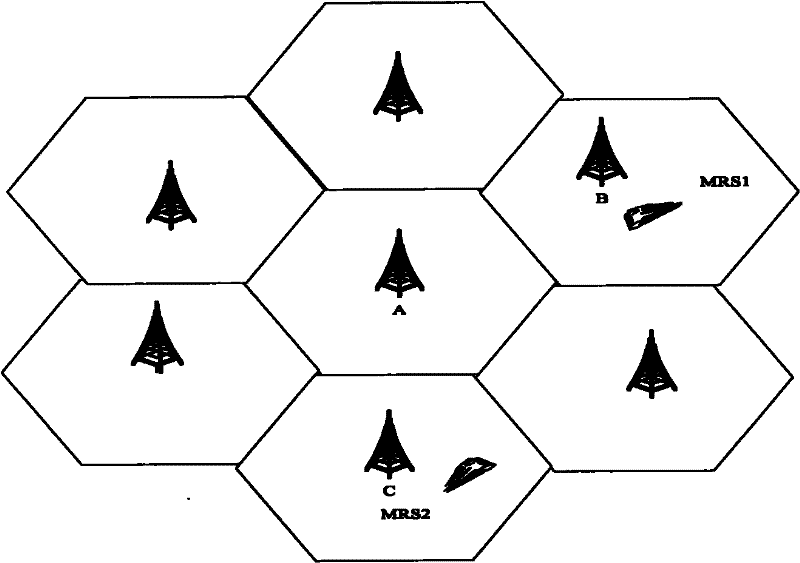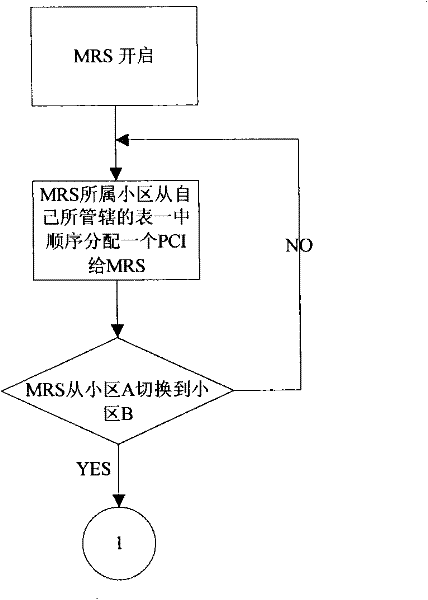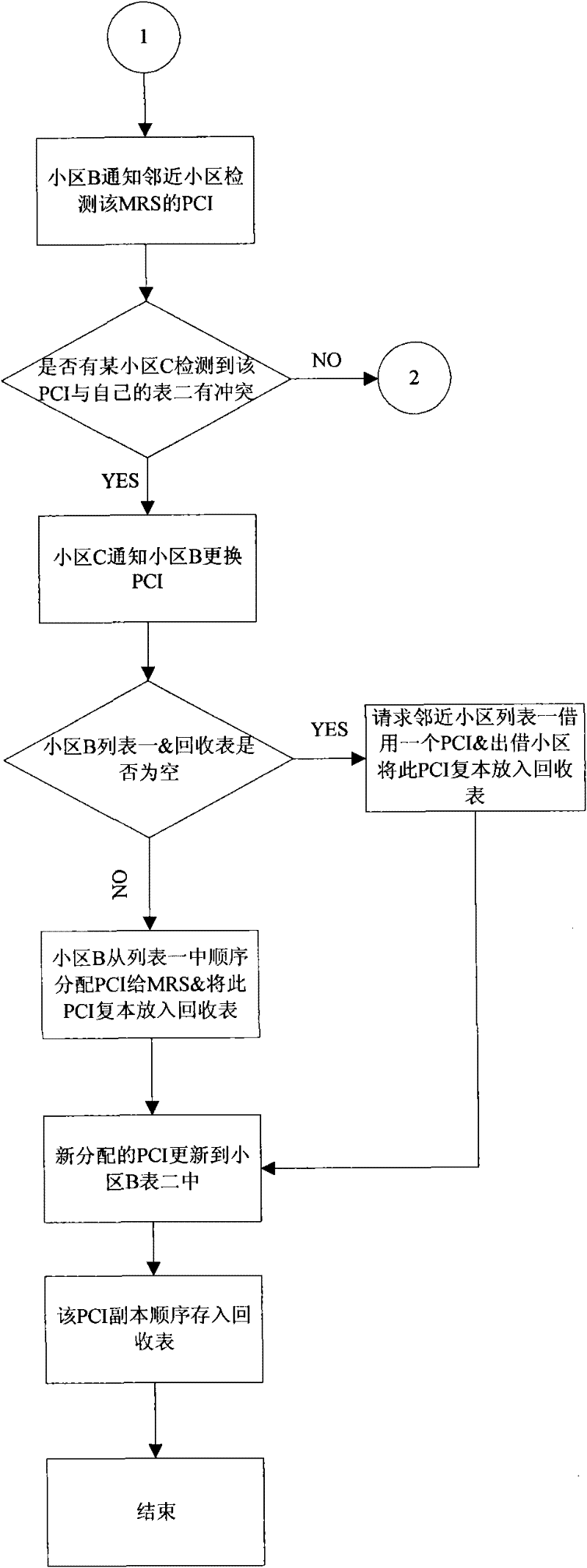MRS (Mobile Relay Station) PCI (physical cell ID) distribution method
An allocation method and re-allocation technology, applied in the direction of electrical components, wireless communication, network data management, etc., can solve the problems of increased PCI allocation delay, inapplicability, and unsuitable application, etc., to reduce processing load and signaling overhead , Avoid PCI collision and save link resources
- Summary
- Abstract
- Description
- Claims
- Application Information
AI Technical Summary
Problems solved by technology
Method used
Image
Examples
Embodiment 1
[0043] This embodiment provides a method for MRS PCI allocation, which includes the following steps:
[0044] [Step A], the PCI allocation detection list is set at the macro base station end of each community; the PCI allocation detection list includes table one, table two, and a recovery table; the table one is used to store available PCI; the table two is used to store PCIs that are already in use; the recovery table is used to store spare PCIs. The available PCIs are a certain number of PCIs randomly selected from remaining PCIs in the cell, except for the fixed PCIs in the cell and the fixed PCIs in adjacent cells. Said table two includes a first module and a second module; said first module is used to store the fixed PCI in the neighborhood of the community and in the community, and the PCI stored in this module is static; the second module uses To store the PCI of the newly introduced site, if there is a conflict between the PCI of the newly introduced site and the PCI ...
Embodiment 2
[0057] In this embodiment, a high-speed moving train is taken as an example. The MRS PCI collision detection scenario is as follows: figure 1 Shown:
[0058] Firstly, configure a PCI list for each macro base station according to the principle of PCI non-conflict between adjacent cells. The list includes three parts: Table 1, Table 2, and Recycling Table.
[0059] Table 1: Store available PCI;
[0060] According to the search of each cell, you can know the macro base stations adjacent to the cell and the fixed PCIs in the cell, exclude these PCIs, and randomly select a certain number of PCIs from the remaining PCIs to create a dedicated PCI list, that is, Table 1. For the allocation of MRS PCI, the principle of non-conflict between the exclusive lists of adjacent cells must be followed when setting.
[0061] Table 2: Store the PCIs that are already in use;
[0062] What is included from this list can be considered in two modules:
[0063] The first module is the fixed PCI i...
PUM
 Login to View More
Login to View More Abstract
Description
Claims
Application Information
 Login to View More
Login to View More - Generate Ideas
- Intellectual Property
- Life Sciences
- Materials
- Tech Scout
- Unparalleled Data Quality
- Higher Quality Content
- 60% Fewer Hallucinations
Browse by: Latest US Patents, China's latest patents, Technical Efficacy Thesaurus, Application Domain, Technology Topic, Popular Technical Reports.
© 2025 PatSnap. All rights reserved.Legal|Privacy policy|Modern Slavery Act Transparency Statement|Sitemap|About US| Contact US: help@patsnap.com



